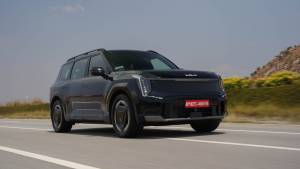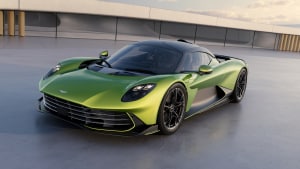Bajaj Pulsar NS160 and NS200 review - hardly an upgrade, but do you care?
I read somewhere that most working individuals in places like Pune drink five cups of tea a day - out of which four could be at tea stalls. No wonder such tea stalls at mushrooming in every nook and corner of the city and today a cup of tea can cost anywhere between Rs 10-20 - quite an expensive affair if you are addicted to this beverage! Apart from tea stalls, another thing Pune is famous for is Bajaj - the brand that got many of us addicted to motorcycling thanks to the Pulsar. Today in the power commuter space they have Pulsars ranging from 125 to 250cc capacities, and three options if you are shopping in the 150-160cc range alone. All three feel pretty much the same though - racy, rev-happy with excellent handling dynamics - so your buying decision is largely based on what fits your pocket.
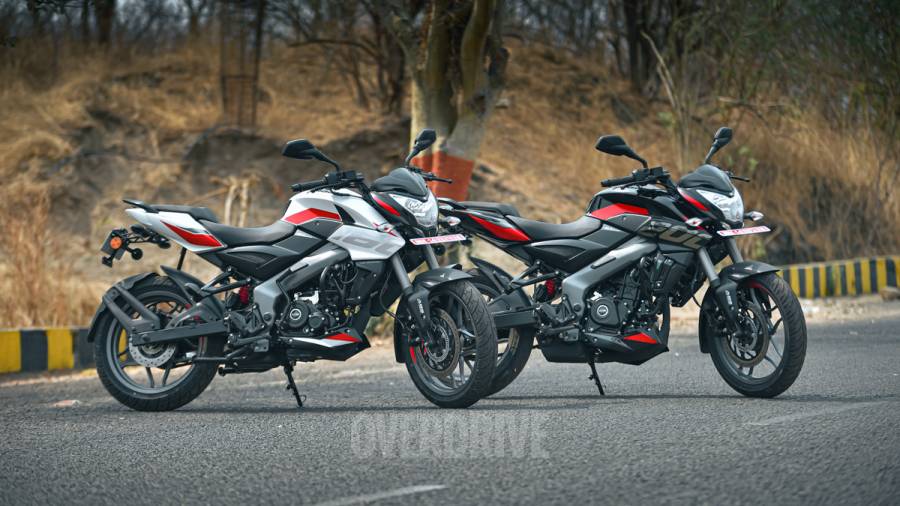
But in today's times of easy finance options, if you were to sacrifice a few cups of tea every day and it will easily cover the gap in the EMI between P150 and the N160. And if you give up buying tea altogether, you should be able to comfortably get the NS160 - which is now here in an updated avatar. But is it worth giving up the addiction? Let's find out.
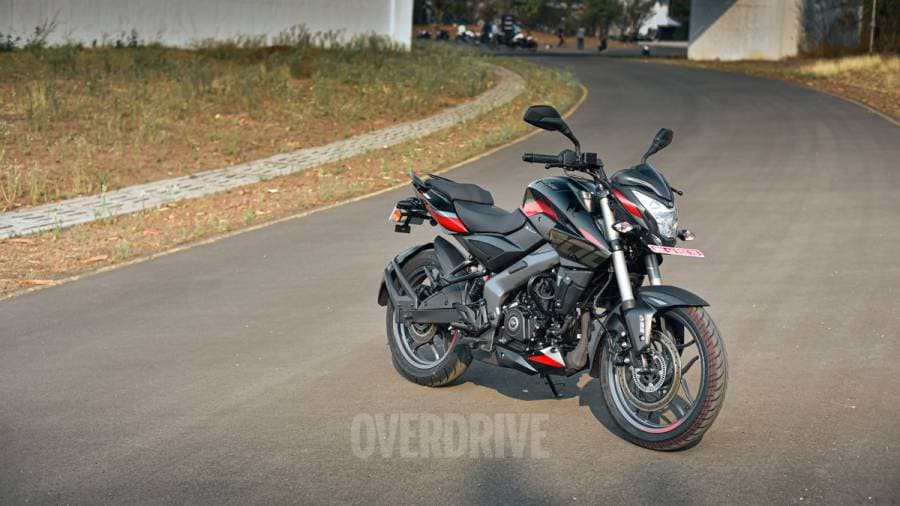
Design
At a passing glance, the Pulsar NS 160 may not appear new at all. It still wears the same old clothes but sports new colour schemes. The bodywork is attached to the same old frame too but the bike rolls on new wheels and front suspension. The wheels come from the Pulsar N250, which means the tyres are now wider too - 100/80x17 up front and 130/70x17 at the rear. These wheels bring along the same Grimeca disc brakes as the Pulsar 250 too. It would take an eagle-eyed onlooker to spot this new hardware but a clear giveaway of the new Pulsar NS' design are the new 33mm upside-down forks which replace the standard 37mm legs of the older model. These shouldn't be too hard to retrofit on an older NS 160 or 200 but will be an expensive affair considering you would have to change to the new wheels and brakes too.
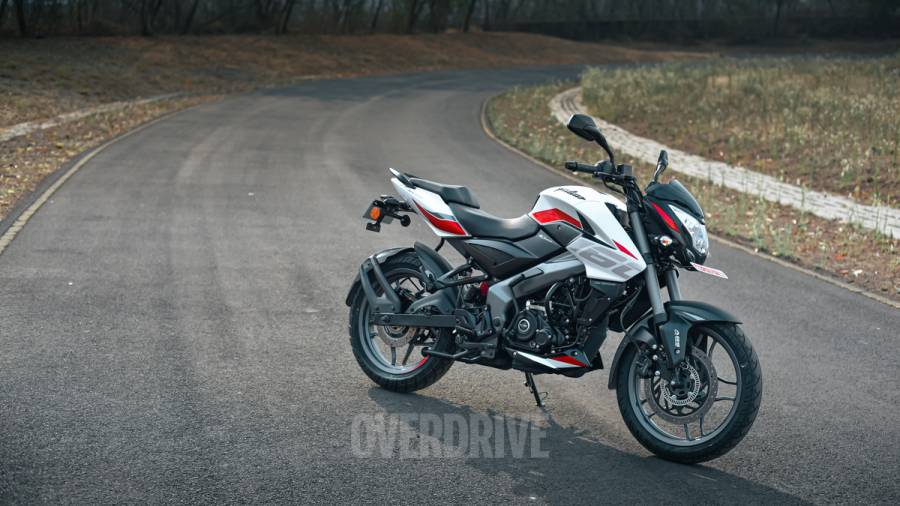
Speaking of the 200, all these updates are seen on the 2023 NS 200 as well. So the good news is that all the cycle parts are identical between NS 160 and 200 and even the spring rates for the suspension or the compound for the tyres are exactly similar between the two models despite their 6kg weight difference.
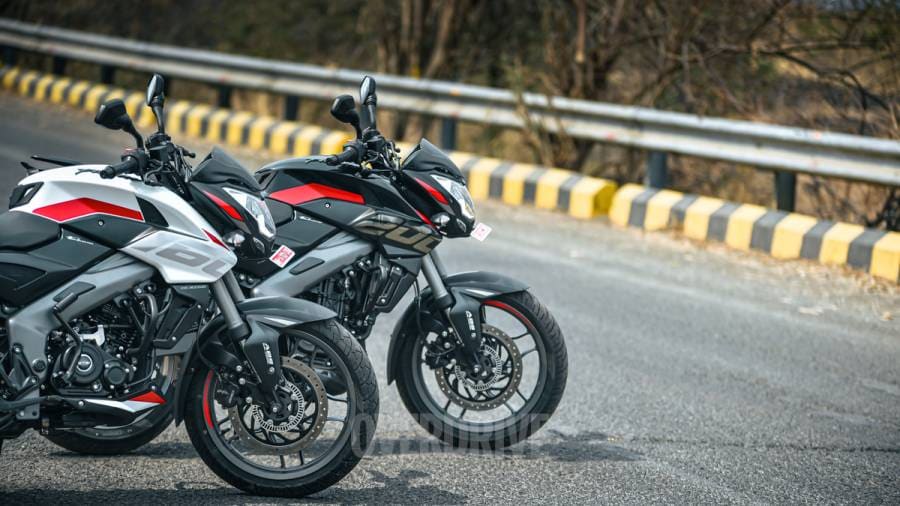
Engine
So the only real differentiator between the two models is the engine - a 160cc, oil-cooled mill with a 5-speed transmission on the smaller NS, versus the 199cc liquid-cooled motor with a 6-speed gearbox on the pricier sibling. Both the engines remain largely unchanged though from the BSVI counterparts, but are stage OBD2 compliant now and can comfortably run on the E20 ethanol blend as well. Out of the two the NS200 has the superior motor not only in terms of displacement or power but also in terms of technology - triple spark ignition, liquid cooling, KTM 200 Duke-derived internals et al. Even its leg-guard mounting is similar to the Duke.
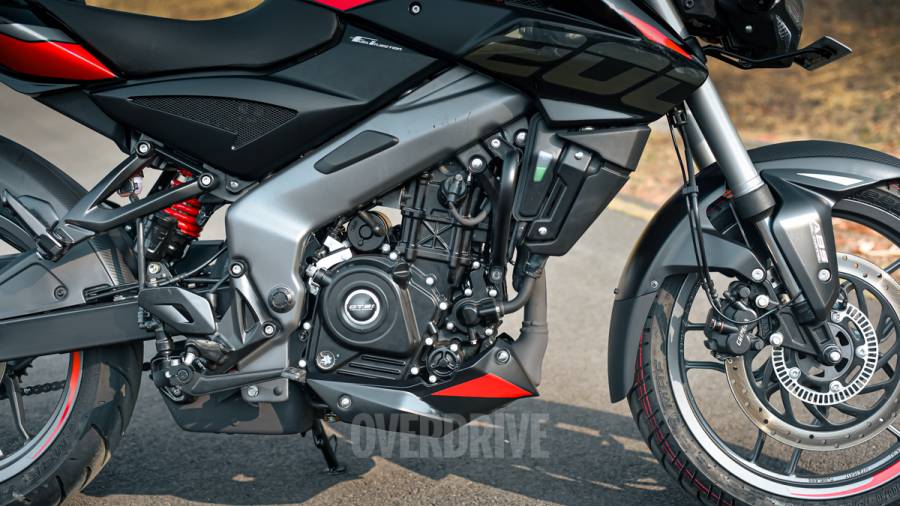
While the upgraded components are similar to the NS160 and NS200, there is a difference in what they do to the overall kerb weight of the 2023 models vis-a-vis their outgoing counterparts. The slimmer forks with their upside-down construction use lesser steel and more aluminium and that saves 2kg. The 250's wheels and brakes together save another 1kg. But because the NS160 moves to fatter tyres now and dual-channel ABS is standard, it has put on 1kg over the outgoing model. The NS200 on the other hand enjoys the 3kg weight loss.
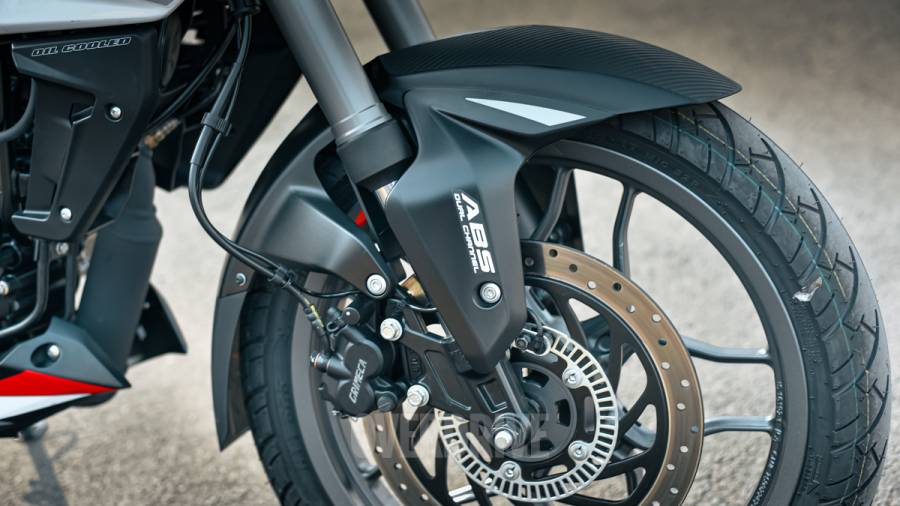
Combine this with the 1PS it gained during the BSVI transition and the NS200 now boasts of having the highest power-to-weight ratio (155PS/tonne) amongst any of the Pulsars - ahead of the erstwhile 'Fastest Indian' P220F and even the range-topping Pulsar 250s.
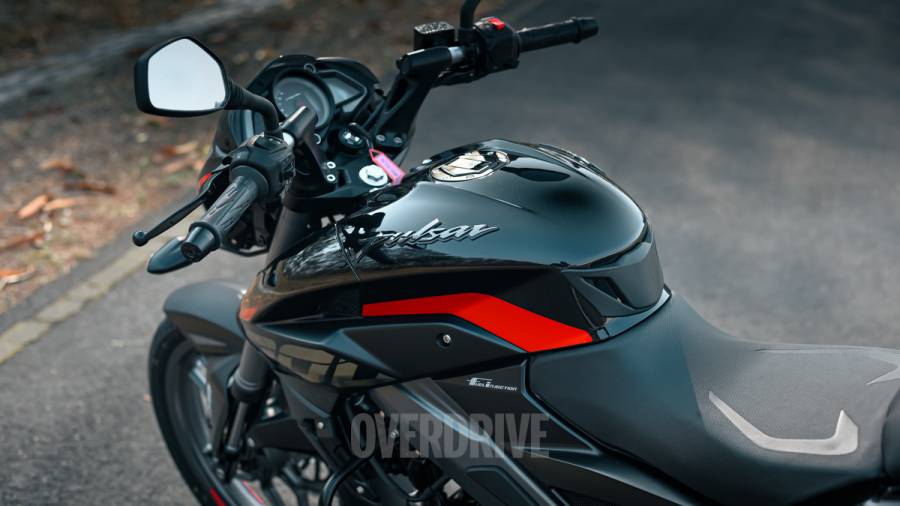
Riding dynamics
While the improvement in the power-to-weight may be hard to notice, you are likely to feel the improved front-end stability offered by the forks. We didn't have complaints about the outgoing NS' handling dynamics, but the new one feels more planted even through mid-corner bumps like the ones prevalent through the bowl on Bajaj's Chakan test track, The lighter wheels also make for slightly sharper turn-ins and the new forks compliment that attitude, but going hot into the corner can make the front feel skittish.
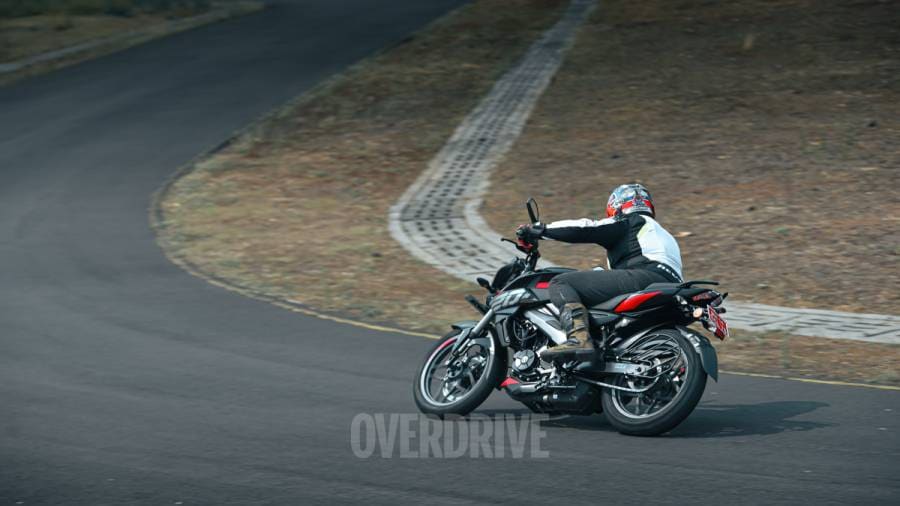
The rear suspension could have been done with a slightly stiffer setup too. The improvement in handling is a lot more noticeable on the NS160 and as before, its motor feels peppier than the 200 when it comes to initial/low-end power delivery. Both these engines are peaky though and loved to be ridden on the limit and the new handling package compliments that approach. So while the upgrades seem minor, anyone who loves the Pulsars for their handling dynamics will appreciate the efforts put into improving the NS.
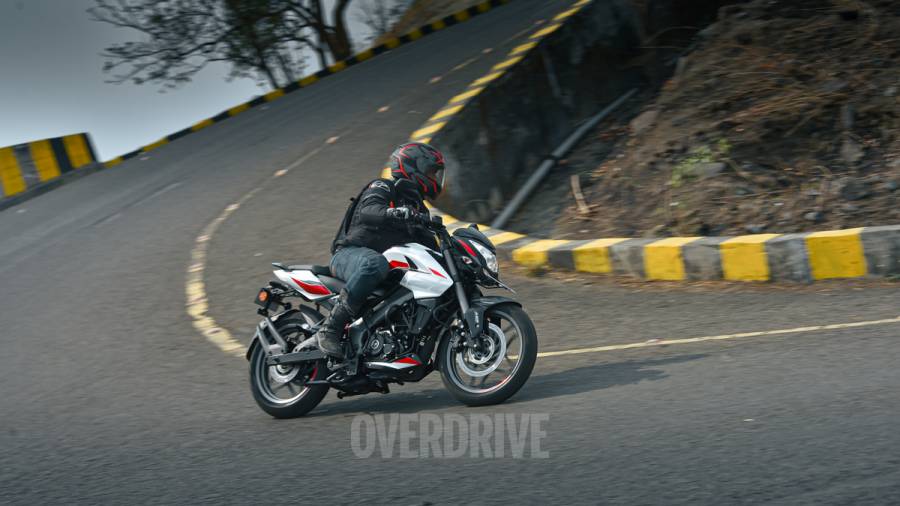
Have they done enough though?
Maybe not. The new NS line still leaves one wanting for a slipper clutch, LED headlights and the infinity console that is available on lesser models from the Pulsar line-up. A few quality improvements would have been welcome too - like the side stand still has the ugly golden nut that sticks out like a sore thumb or the rear footpegs which still feel flimsy and are prone to going loose with time. The front footpegs still don't get the auto unfolding spring.
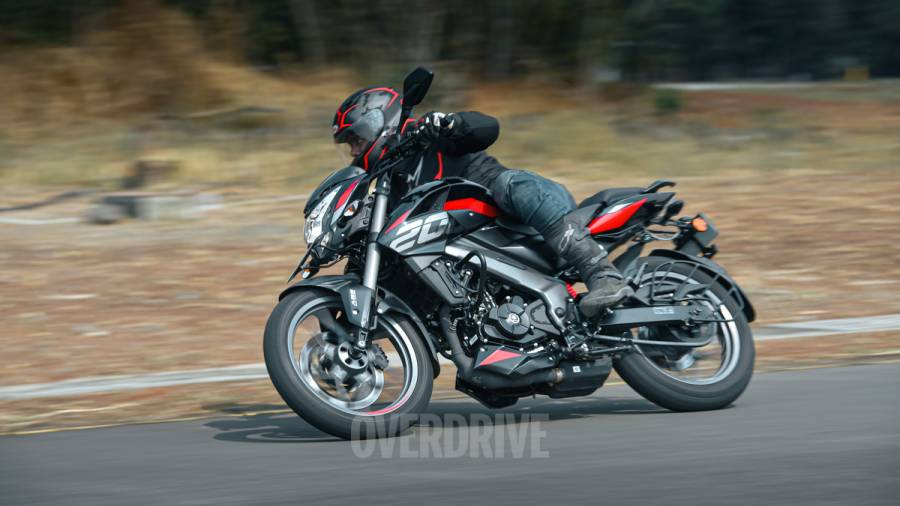
Verdict
Despite these shortcomings, the NS (200) remains my favourite in the Pulsar line-up. Maybe it is just me, but this is one bike on which I don't care about the lack of some new-age equipment. Its handling dynamics and the peppy engine are enough to make me grin wide inside my helmet every single time. So from that point of view, it is my cup of tea.
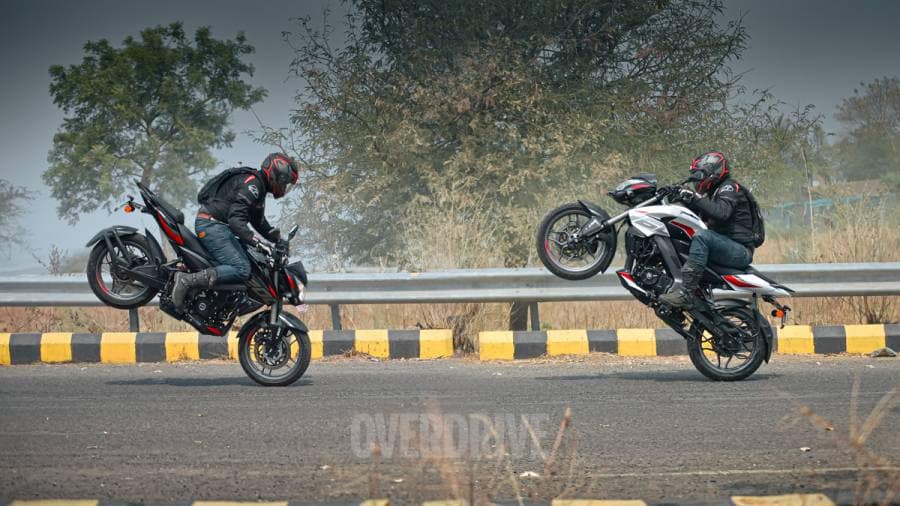
Words Rohit Paradkar
Photography Anis Shaikh
Guest Rider Vignesh C
Starts Rs 1,00,307
200cc
6-Speed
23.52
18.30
58.00 Kmpl
